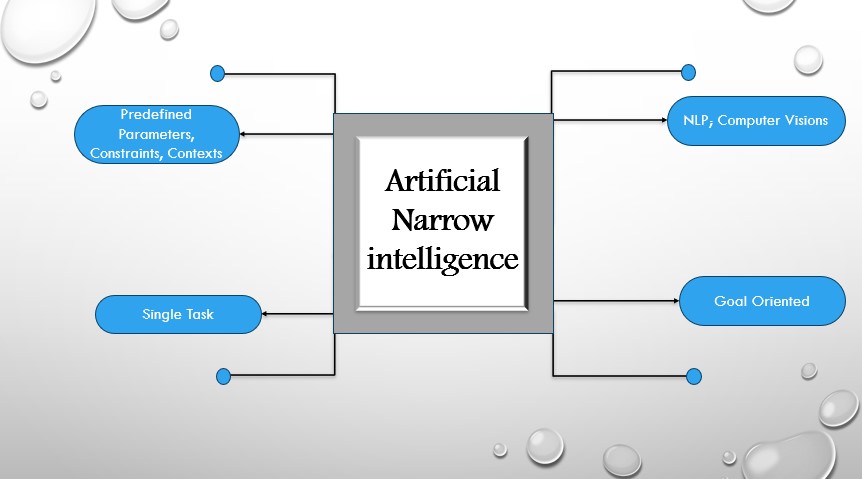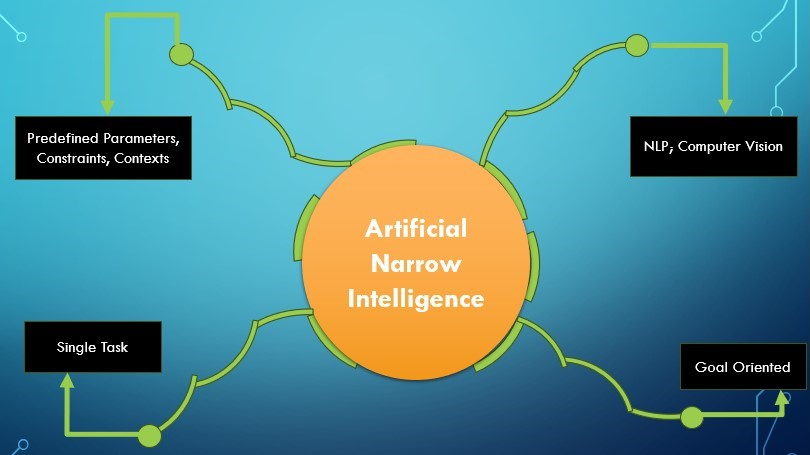Artificial Narrow Intelligence Introduction:
Artificial Narrow Intelligence (ANI) is evolving to change the past and shape the future. For instance, it features as one of the most popular and influential applications from various branches, such as narrow and weak AI. The problem was solved by ANI, a system designed to perform a narrow range of tasks with a certain degree of efficiency. In contrast, general AI aims to mimic human intelligence across a variety of activities. Therefore, ANI excels in narrowly focused areas that offer practical solutions to real-world problems.

Understanding Artificial Narrow Intelligence
Neural artificial intelligence excels at solving well defined problems within specialized domains by leveraging algorithms, data, and computational power. Examples include tools like Google Translate, recommendation systems on Netflix, and virtual assistants like Siri. These systems analyze vast datasets to identify patterns and perform specific tasks with high accuracy. However and their functionality is limited to their programmed scope, unable to adapt to unrelated tasks without significant reprogramming for instance, an AI designed to play chess cannot seamlessly switch to another game or activity.
Application of Intelligence Narrow:
Narrow Artificial Intelligence has encountered application end multiples Industries revolucionando loss Fuji’s de taboo y Armenian la efficiency.
1.Health Care:
Diseases such as cancer are identified by images with high accuracy. Virtual health assistants help patients manage their conditions by providing reminders and guidance.
2.Finance
Fraud detection system use artificial intelligence to analyze transactions and spot suspicious activity in real time. Algorithmic trading relies on artificial intelligence to make split-second decisions in the stock market.
3.Customer Service:
Chatbots and virtual assistants provide round-the clock support. Handle routine inquiries and improve customer experience.
4Artificial Narrow Intelligence Transportation:
Narrow artificial intelligence navigation system power Koi ‘s traffic prediction tools and even self-driving card technologies.
5.Education:
Personalized learning platforms leverage artificial intelligence to tailor learning content to student’s individual needs, promoting better outcomes.
Artificial Narrow Intelligence Strengths and Limitations:
The strengths of narrow artificial ihttps://digitalwebpoint.com/2025/01/05/artificial-intelligence-ai/ntelligence lie in its accuracy ability to handle large-scale tasks. By automating repetitive or complex processes it reduces human error and frees up resources for more creative work. Artificial intelligence is not without its limitations. It lacks flexibility creativity and ability to think independently. Moreover the reliance on high and quality data means that biases in the data can lead to biased results raising ethical concerns. I can translate.
The future of Narrow Artificial intelligence:
Narrow Artificial Intelligence will likely become more sophisticated with improved capabilities and wider adoption as technology advances. Innovations in machine learning, natural language processing and data analytics are set to push the limits of what artificial intelligence can achieve. Its development should be guided by ethical principles to ensures a wide range of fair and neutral applications.
Conclusion:
Narrow represents the ground component of artificial intelligence and offers powerful tools to address specific challenges. Application in healthcare, finance, education and beyond demonstrate its transformative potential. But its Role in driving performance innovation is undeniable. As we continue to refine and expand its capabilities, Narrow will continue to be a cornerstone of the development of artificial intelligence techniques, shaping the way we live and work in the digital world.






Leave a Reply